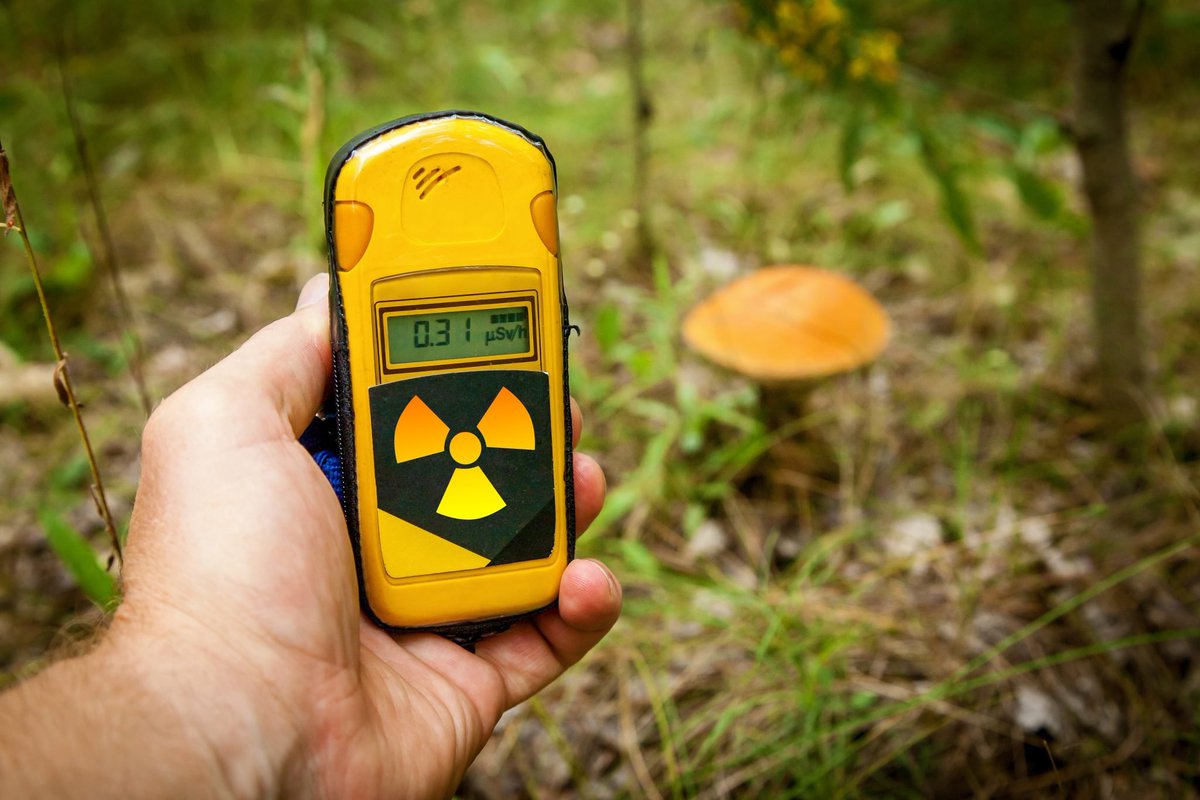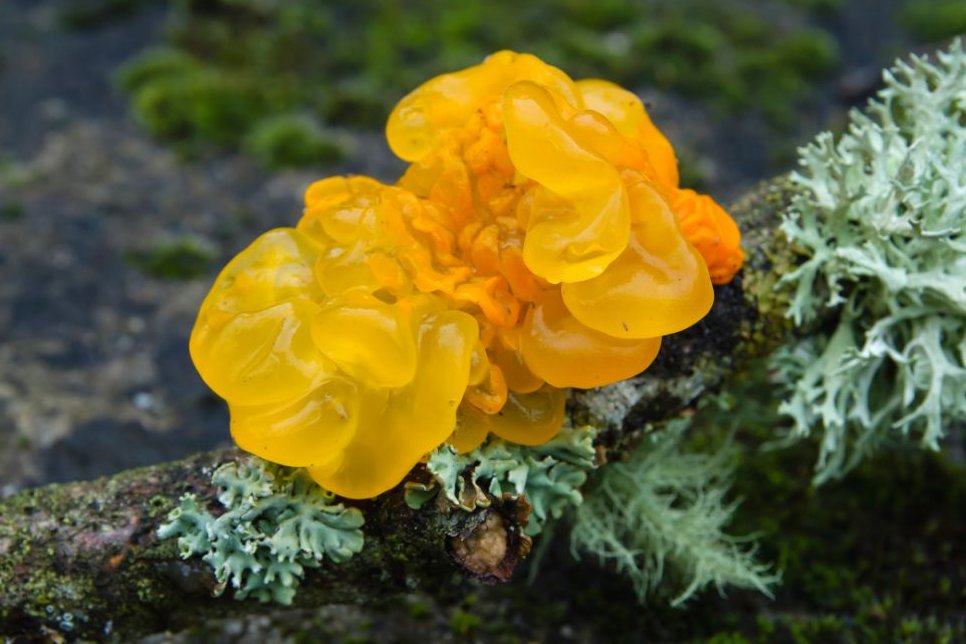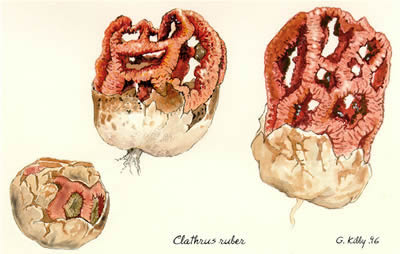There are fungi at Chernobyl that EAT radiation and nuclear fallout – and that’s only the start of this wild story 🍄☢️
Buckle up for a wild thread about radioactive boars, fungal space suits, radiation-detecting fungi, black frogs and a good dose of hope! 🧵


Buckle up for a wild thread about radioactive boars, fungal space suits, radiation-detecting fungi, black frogs and a good dose of hope! 🧵


On 26 April 1986, a reactor at the Chernobyl Nuclear Power Plant exploded. It destroyed the containment building and caused a reactor core fire that lasted 8 days, spraying airborne radioactive contaminants throughout the USSR and Europe 😨 

People started dying of acute radiation syndrome (ARS) (and the WHO predicts that 9000+ people will die of cancer triggered by this event). They created the Exclusion Zone – a restricted area of 2,600 km2 (1,000 sq mi) around the site where radioactive contamination is highest. 

Imagine how SURREAL it must have been for the researchers when they got access in the 90s, approached this desolate wasteland at this tragic site, and saw that the surrounding soil had turned BLACK from fungal growth!
Even stranger: they realised this black fungi wasn’t just growing *despite* the radiation, but seemed to be growing *towards* it.
When they were able to get close enough, they found mould and yeast GROWING on the walls INSIDE the reactor.
When they were able to get close enough, they found mould and yeast GROWING on the walls INSIDE the reactor.

How? Why? What are they DOING in there?? And why are the fungi black?
In 2007, a group of researchers found the fungi had melanin (yup, just like humans do) that was converting energy from ionizing radiation into usable chemical energy. They use pigment to EAT IT! 🍄☢️
In 2007, a group of researchers found the fungi had melanin (yup, just like humans do) that was converting energy from ionizing radiation into usable chemical energy. They use pigment to EAT IT! 🍄☢️

Source of first paper:
Confirmed by U.S. Naval Research Laboratory: doi.org/10.1016/j.mib.…
doi.org/10.1371/journa…
Confirmed by U.S. Naval Research Laboratory: doi.org/10.1016/j.mib.…
doi.org/10.1371/journa…
Unrelated but cool: while looking around in 2016, they found BLACK FROGS! Eastern tree frogs (Hyla orientalis) which are normally bright green had rapidly evolved to have way more melanin. Nature is rad as heck.
reaction.life/chernobyl-blac…


reaction.life/chernobyl-blac…


Fungi can absorb & metabolize radiation – can this protect humans who are at risk of radiation poison, like astronauts🧑🚀?? YUP!
In an experiment, a thin layer of melanized fungus decreased radiation that would affect astronauts in space by 2%-5%! Mushroom space suits when??
In an experiment, a thin layer of melanized fungus decreased radiation that would affect astronauts in space by 2%-5%! Mushroom space suits when??
Source:
Read my full thread about fungi in space here (it's wild, they grow on the outside of the ISS):
doi.org/10.1111/1462-2…
Read my full thread about fungi in space here (it's wild, they grow on the outside of the ISS):
doi.org/10.1111/1462-2…
https://x.com/annethegnome/status/1753200642976591924
WHATS MORE if these kind of fungi grow *toward* radiation, then we can use them to locate radioactive material! These bad ass fungi are absorbing the nasty radiation waves, but we still have radioactive particles in the soil. What if fungi could stop the radiation at the source?
From the University of Saskatchewan:
“We wanted to see whether we could train our fungi to recognize certain types of radioactive nuclides. This potentially would turn these fungi into cost-effective and highly sensitive biological detectors of nuclear fallout,” said Dadachova.
“We wanted to see whether we could train our fungi to recognize certain types of radioactive nuclides. This potentially would turn these fungi into cost-effective and highly sensitive biological detectors of nuclear fallout,” said Dadachova.
“And because the fungi grow in response to radiation, they could envelop microscopic particles, preventing the radioactivity from leaching into the ground. So potentially we could use these radio-adapted fungi ... to clean up nuclear contamination.”
HECK YEAH! 🥳🎉🍄🍾
HECK YEAH! 🥳🎉🍄🍾
But fungi don’t just surround and contain radionuclides — some mushrooms actually absorb the radionuclides. Which sounds super cool until you learn that the mushrooms themselves then become radioactive. 

According to the German food safety regulator, in 2021~95% of wild mushrooms in Germany showed radioactive contamination from Chernobyl– but not above legal limits. Lots of foods are a little radioactive and it’s probably ok — unless you’re a boar.
reuters.com/business/envir…
reuters.com/business/envir…
The Chernobyl disaster displaced humans, but some wildlife actually flourished. Birds were found nesting inside the steel sarcophagus built around the reactor. In 2 years, the wild boar population increased by 8x!
Humans gone? Let's party! 🐗🐗🐗
news.bbc.co.uk/2/hi/europe/49…

Humans gone? Let's party! 🐗🐗🐗
news.bbc.co.uk/2/hi/europe/49…

What do boars love to eat? Truffles!
Unfortunately, cesium (very radioactive) accumulates in truffles. This leads to a process called 📢biomagnification: contaminant concentrations increase in the tissue of higher species of the food chain.
☢️DO NOT EAT THE BOARS!☢️ 🙅🐗
Unfortunately, cesium (very radioactive) accumulates in truffles. This leads to a process called 📢biomagnification: contaminant concentrations increase in the tissue of higher species of the food chain.
☢️DO NOT EAT THE BOARS!☢️ 🙅🐗

Other beings are thriving in the exclusion zone. Boars, birds, lynxes, wolves & mushrooms alike!
Despite this horrific disaster and the unfathomable amount of toxins, nature is adapting and recovering. Even the poisoned earth is not a cold dead thing 🧡
Despite this horrific disaster and the unfathomable amount of toxins, nature is adapting and recovering. Even the poisoned earth is not a cold dead thing 🧡

And this is where I leave you with hope: we have mounting evidence that fungi can CLEAN UP nuclear fallout, and that they're ALREADY doing it.
There's a whole field called mycoremediation that studies how fungi can help remove toxins from the earth and theyre making big strides!
There's a whole field called mycoremediation that studies how fungi can help remove toxins from the earth and theyre making big strides!
There are fungi that eat microplastics!
There are fungi that clean oil spills!
There are fungi that break down mining waste!
There are fungi that remove heavy metals & e. coli from water!
FUNGI CAN DO ANYTHING 😍🍄🧡
There are fungi that clean oil spills!
There are fungi that break down mining waste!
There are fungi that remove heavy metals & e. coli from water!
FUNGI CAN DO ANYTHING 😍🍄🧡
As for nuclear fallout?
Some fungi can grow despite radiation.
Some fungi can absorb, eat and shield us from radiation.
And some fungi can pull the radioactive particles out of the soil.
😍😍😍
A lot of this research is relatively new: who knows what we'll find next!
Some fungi can grow despite radiation.
Some fungi can absorb, eat and shield us from radiation.
And some fungi can pull the radioactive particles out of the soil.
😍😍😍
A lot of this research is relatively new: who knows what we'll find next!
If your interest is peaked, you can check out my other threads here:
And if you want to buy me loot, you can do that here:
Friendly reminder that I'm not a scientist, just a D&D nerd who likes fungi
throne.com/gnome_anne
linktr.ee/annethegnome
And if you want to buy me loot, you can do that here:
Friendly reminder that I'm not a scientist, just a D&D nerd who likes fungi
https://x.com/annethegnome/status/1744981404231029030
throne.com/gnome_anne
linktr.ee/annethegnome
If you’re knowledgeable & annoyed about something I didn’t explain enough, I encourage you to use that energy to answer the many questions in the replies 💕💕
I love the curiousity but I can’t answer everyone, so help is appreciated.
I love the curiousity but I can’t answer everyone, so help is appreciated.
• • •
Missing some Tweet in this thread? You can try to
force a refresh




















